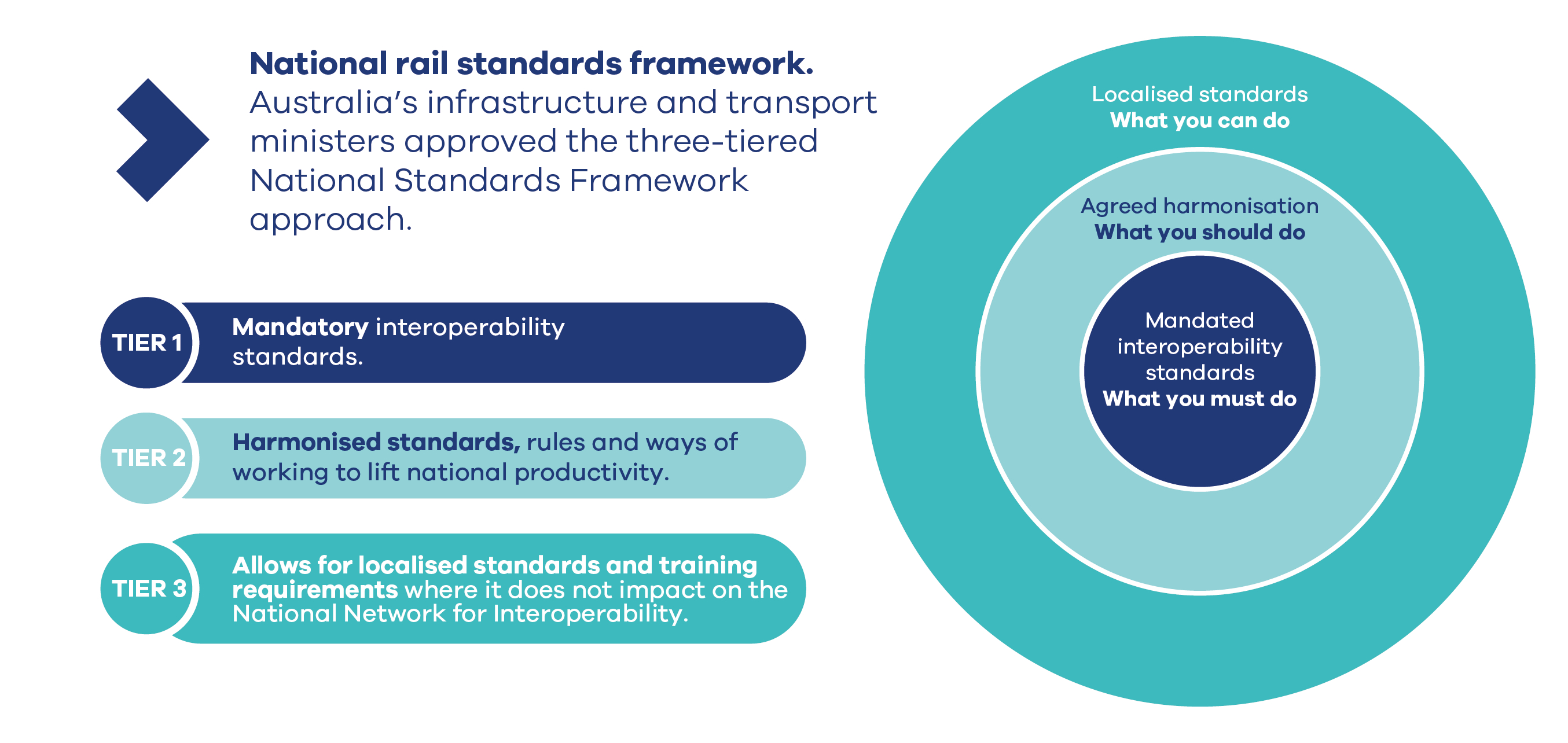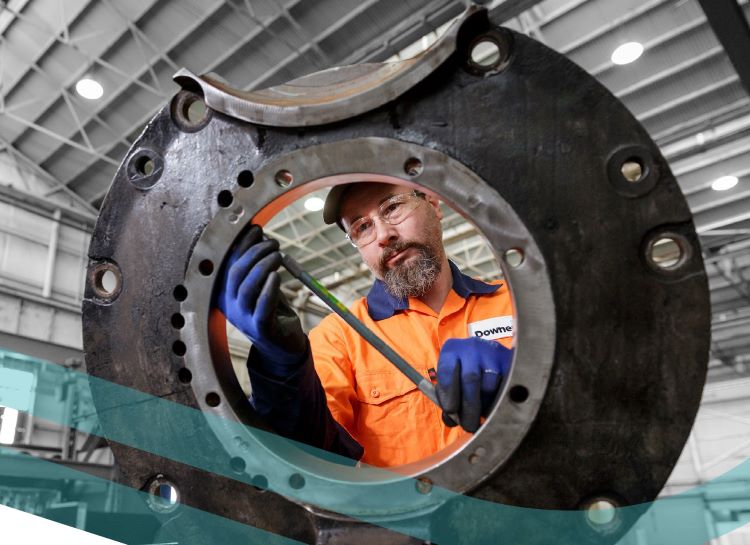Latest news
We’re calling on technical experts to help draft Australia’s first two mandatory rail standards to support the rollout of European Train Control System (ETCS) technology across the National Network for Interoperability (NNI).
This includes a standard setting out the trackside/infrastructure requirements to ensure ETCS compatibility across the NNI. And a standard specifying the requirements for on-board train fitment to ensure ETCS compatibility.
The scope for the standards was informed by a discussion paper. You can find a copy of the feedback report here.
Tender documents to help draft these historic standards are here.
Deadline for submissions: 5pm, 3 December 2025, with final questions to be submitted by 5pm, 10 November 2025.
To stay updated to all NRAP news, subscribe to our monthly newsletters here.
National Rail Standards Framework
Australia’s infrastructure and transport ministers have agreed to governance changes that will support the development of standards to lock in interoperability benefits.
Under the changes the NTC will continue to develop a small number of mandatory standards while harmonised standards that support interoperability will be developed by a renewed Rail Industry Safety and Standards Board (Australia).
The changes are part of a new three-tier National Rail Standards Framework.
The framework defines:
- Tier 1 - Mandatory standards: what must be done to ensure interoperability and safety across Australia’s rail networks (mandatory standards)
- Tier 2 - Harmonised standards: what should be done to improve consistency (national standards for harmonisation)
- Tier 3 - Local standards: what can be done to lift efficiencies on individual networks (local standards).
Mandatory standards are being developed for:
- digital train control technology and driver interface
- rolling stock approval processes
Harmonisation standards will set out best-practice approaches to align:
- operating rules and processes
- infrastructure and train componentry
- skills and training requirements
Local standards provide flexibility for individual networks where national interoperability is not impacted.
The NTC has worked alongside governments and industry to develop this framework. Together with the Rail Industry Safety and Standards Board (RISSB), Australasian Railway Association (ARA), Office of National Rail Industry Coordination (ONRIC), the Harmonisation of Rail Standards research report was commissioned.
The report highlighted the need for a national body to oversee the development, implementation and adoption of nationally consistent rail standards.
A more effective governance model
We’re working with governments, industry and unions to establish new institutional and governance arrangements for rail.
Industry consultation has shown that a stronger governance model is essential to delivering a nationally consistent approach to standards and driving interoperability across Australia’s networks.
The NTC is developing oversight arrangements in five key areas:
- Interoperability assessment – ensuring future network decisions don’t create new barriers to national interoperability
- National standards development and adoption – coordinating how standards are developed, approved and implemented
- Rolling stock approvals – improving the consistency and efficiency of approvals across networks
- Safeworking governance – supporting nationally consistent operating rules and procedures
- Skills and competency oversight – aligning workforce training and accreditation
Changes to Rail Safety National Law
A recent review of the RSNL identified links between safety and interoperability and recommended that interoperability be a feature in the law.
As a first step, an amendment has been made to RSNL regulations, requiring rail transport operators to have systems and procedures that consider interoperability issues. These must be applied when making operational changes on the NNI. An Interoperability Management Plan must then be prepared if interoperability issues are identified.
This marks a shift from the current approach where networks focus on what works best for their own operations.
The change will come into effect from 1 November 2025 with a transition period until 28 February 2026.
A Draft Interoperability of Railway Operations Guideline is now available on the ONRSR website to help implement the changes. The document is open for consultation and operators are encouraged to share feedback or ask questions about the new requirements.
Interested parties can provide feedback on the draft guideline until 14 November 2025 at contact@onrsr.com.au
And watch a video of the webinar here.
Further changes to the RSNL are underway to build even stronger interoperability requirements into the law.
How to participate
If you'd like to find out more about how we are helping to support a national approach to rail send us an email or subscribe to our monthly newsletter here.
To make a formal submission in response to our discussion papers, you can find out more here.
- Log in to post comments

